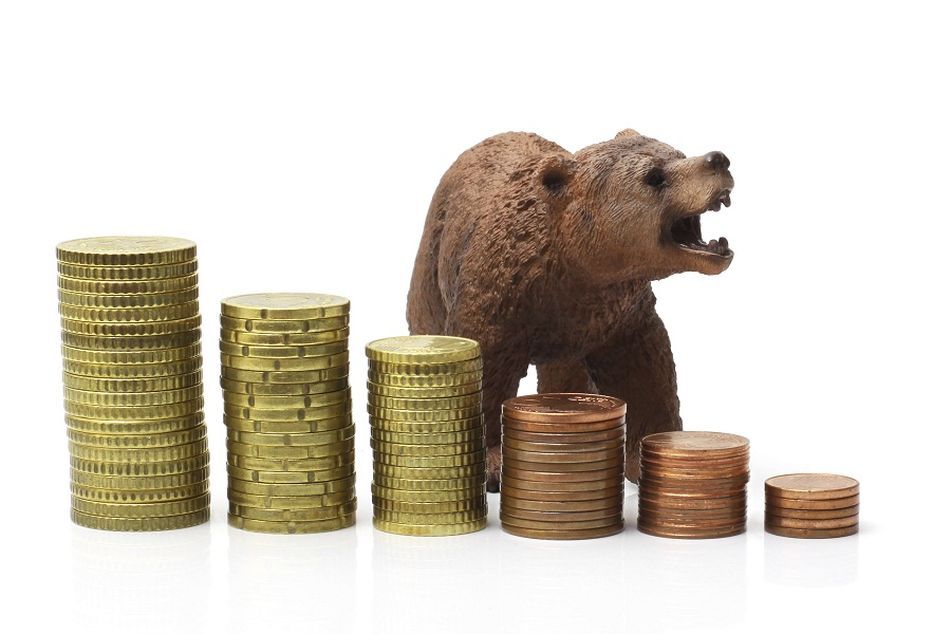What early stock market volatility means for the year ahead

Market watchers say stocks are fragile on multiple fronts.
There’s no particular reason the start of a new calendar year should represent the start of a new mood in the financial markets — but that’s sort of what’s happening.
On two of the first four trading days of 2016, U.S. equity markets suffered major pullbacks in the wake of circuit-breaker-induced market shutdowns in China, which were set to close the market for the day whenever the Shanghai Composite dropped by 7%.
The circuit breaker on Chinese markets was removed after Thursday’s shutdown, drawing praise from some market watchers for giving stocks a chance to recover, but it won’t likely be enough to completely calm the nerves of U.S. investors.
“When the glass is full of problems, even a little shake can spill it over,” said Douglas Cote, chief investment strategist at Voya Financial.
In addition to the weakness of China’s economy, Mr. Cote said investors should be worried about oil falling below $30 a barrel, as well as weak fourth-quarter earnings reports.
“We could have three consecutive quarters of negative earnings for the S&P,” he said. “That hasn’t happened since 2008.”
TRADING HALTS
The trading halts on the Shanghai exchange that rippled across the global financial markets on both Monday and Thursday, sending the S&P 500 and Dow Jones Industrial Average down more than 2% each day, were viewed by many as a tipping point. Still, it was not the only reason for the enhanced risk-off attitude.
“At the end of the year a lot of technical momentum fizzled out, and January typically has increased trading volume, and that means the direction of the market can get amplified,” said Steven Wruble, chief investment officer at RiskX Investments.
“I just don’t think there’s a lot of optimism in sight, especially from energy and oil prices,” he said. “We still have this currency issue, which is directly tied to the commodity issue. You’ve got a strong dollar and half of S&P 500 sales are from overseas, which will have an effect on S&P earnings.”
Even with U.S. stocks kicking off the year with the worst four-day start ever, Mr. Wruble isn’t ready to proclaim a full-blown buying opportunity.
BUYING OPPORTUNITY?
The Nasdaq Composite Index dipped on Thursday to 10% below its high last year, and the S&P opened on Friday down 4.88% over the first four trading days. But the Shanghai Composite Index, with the circuit breakers lifted, rallied on Friday to close up nearly 2%, which was followed Friday morning in the U.S. by a strong jobs report to inject some optimism back into the markets.
“This is not enough of a pullback to say there is definitely a buying opportunity right now,” Mr. Wruble said. “It’s tough to say if this is a great entry point because we still have some things to clear out, and some rough waters to get through.”
Robert Doll, chief market strategist at Nuveen Asset Management, ties much of the recent risk-off mood to concerns that the global economic girth of the Chinese economy is in trouble.
“China is important for global currency relationships, commodity prices and the overall deflation threat,” he said.
But even as he saddles China with sparking the recent market volatility, Mr. Doll said investors should be prepared to be tactical, both near and longer-term.
“If I had raised reserves in the rally I would be putting some of it to work right now, believing it is going to be that kind of year,” he said. “That doesn’t mean I’m calling a bottom or wanting to be a hero, but prices are down and fundamentals haven’t changed that much.”
CORPORATE EARNINGS
Like almost everything else rattling the U.S. during the opening week of the year, concerns over what kind of landing China’s economy will experience didn’t just crop up on Jan. 1. But that doesn’t prevent investors from treating it as new information.
“For some reason, when we came into the new year the same concerns that had kept most of this market back just resurfaced, including concerns about a manufacturing decline in the U.S., global problems and oil prices in decline,” said Quincy Krosby, market strategist at Prudential Financial.
Add to that the reality of a Federal Reserve that is trying to move toward a normalization of interest rates, and you’ve got a recipe for big market swings.
“You have a Fed that is a bit more hawkish than the market thought it was,” Ms. Krosby said. “So now you have a market deciding how much of the performance was fundamentals and how much was the Fed’s monetary policy.”
The next shoe to drop will be the corporate earnings reports that start rolling out in a matter of days.
“What we’re left with now is earnings season, because without the Fed driving the market you will need to see evidence that revenues are growing, and until we get that this market is going to be jostling for clarity,” Ms. Krosby said. “All said and done, this is how markets work, because you can’t have markets going up forever. And the more they go up the deeper the fall.”
Learn more about reprints and licensing for this article.








